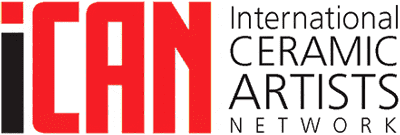Emily Rensink
Website
www.emilyrensink.com
Email
Artist StatementMy work explores the moments that shape who I am, from cherished to unpleasant and beyond. These moments of growth are conveyed through sculpted figures that capture a cartoon-like version of myself, which is reinforced by the bright blocks of color and use of textiles. The humorous approach to the narratives along with the generalized characters provide an opening to reaching a wider audience. By sharing my experiences, I hope to connect with the viewer on a more personal level. Self-reflection is an essential part of human evolution and individual growth. We can empower ourselves by contemplating our experiences, understanding how and why we embody them, and making conscious choices going forward. Living is about reflection and learning, evolving the person you want to be. I for one prefer to do it with a bit of laughter.
What type of clay do you use?
B-mix with grog, Buff
What temperature do you fire to?
Cone 04
What is your primary forming method?
A combination of coil, slab, and pinch methods.
What is your favorite surface treatment?
AMACO underglazes; I love the way they easily layer and help to push the comic strip effect I am going for.
Do you make any of your own tools?
Not currently, but have in the past when needed.
What is your favorite thing about your studio?
It's easily accessible, which encourages me to make time to work, whether 15 minutes or 5 hours.
What is the one thing in your studio you can’t live without?
My sturdy wedging/rolling table. It's nice to have this dedicated space for prep-work, so I can have multiple pieces going on my main work table at once.
What are your top three studio wishes?
More storage, a covered outdoor kiln space, and a wider assortment of underglazes.
What’s on your current reading list?
I'd Rather Be In the Studio by Alyson B. Stanfield, Humor in Craft by Brigitte Martin, and Gone Tomorrow: The Hidden Life of Garbage by Heather Rogers
How do you save money on materials and supplies?
I recycle as many of them as I can to use again and visit resale stores for fabrics and clothing to incorporate.
How do you recharge creatively?
Visit galleries and museums and take walks in nature.
Do you have any DIY tips for studio efficiency?
Put things back where they go . . . it's easier to find them when you need them.
What challenges have you given yourself to overcome?
Inadvertently many over the years, but there is always something I learn in the end.
What did your first piece look like?
Horrid.
What ceramic superpower would you have and why?
A degree in chemistry, because things would make a lot more sense.
What area of skill do you most look to other artists to learn?
Techniques, because you can never have too many tools in your tool belt.
Who is your ceramic art mentor and why?
All who are excited to share their art practice and processes. As an artist and educator I am always looking to learn something new.
What is on your studio playlist?
It truly depends on the day, but when in doubt I always turn to Motown.
Why do you create art?
Because I couldn't imagine a life where I didn't.
Who is your favorite artist and what do you admire about that artist?
There are so many and for so many different reasons; it also fluctuates depending on what concepts/subjects/etc. I am exploring in my own art at that moment.
What is your best studio tip?
Give it a good cleaning once a month; you never know what you might find.
If you could change one property of clay, what would it be?
Absolutely nothing, it's brilliant just as it is.









